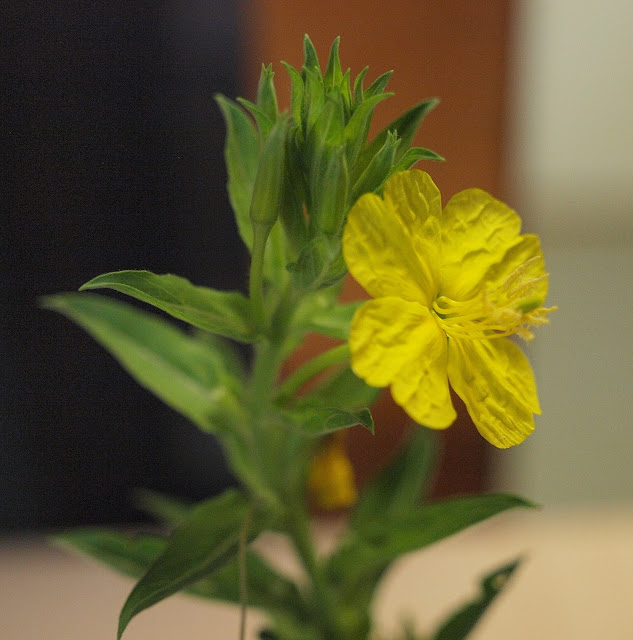Oenothera - Evening Primrose

There is a tall 'weed' that was growing behind our other plants in the main garden. I noticed the other evening that the weed had yellow flowers blooming that I had not seen there before. The plant itself was almost six feet tall and resembled the 'headknocker' weeds that grow here. However, those plants do not have flowers like this. I took a piece off of one and brought it inside to put in a vase. It sat all day with the flowers closed, although some parts of it had changed overnight. Tonight, well after sunset, the snippet of flower was blooming with a larger flower than I had seen, even when I removed it from the plant. It occurred to me that perhaps the plant was blooming at night? So, what was this weed? It is not a weed. It is a native evening primrose. Of course it is blooming at night! I have one other primrose in the pole garden, a low-growing pink one. Now, I'll have to watch for the pods which will develop the seeds.


